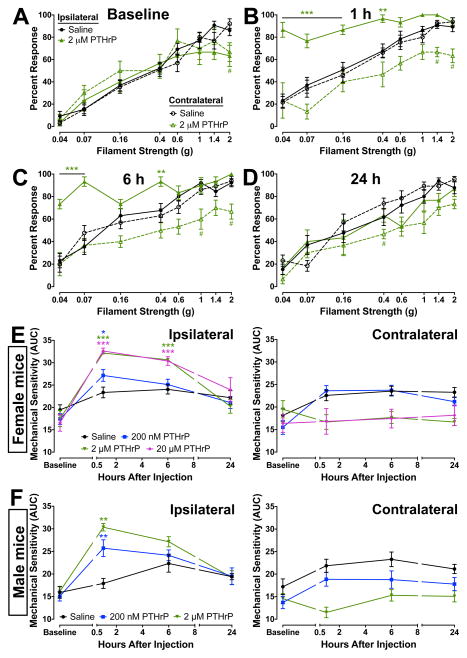Figure 2.
PTHrP induces mechanical hypersensitivity in mouse hindpaws. A–D, Intraplantar PTHrP injection (2 μM) led to significant enhancement in the extent of mechanical sensitivity in the ipsilateral paws after 1 hour (B), as compared to saline injections and baseline measurements (A), which was mostly reversed after 6 and 24 hours (D). No significant increase was observed in the mechanical sensitivity of contralateral paws (dashed lines; A–D). The area under the curve (AUC) for percent response to Von Frey hair filaments of increasing strength for individual mice (separate ipsilateral and contralateral) at individual time points were calculated and plotted (E–F) as mechanical sensitivity at each time points (see methods for details). Data are presented as mean ± SEM calculated mechanical sensitivity (AUC) of mouse hindpaws (n = 6–12 for each group). In both male and female mice PTHrP (200 nM and 2 μM) caused significant mechanical hypersensitivity in ipsilateral paws 1 hour post-injection, which recovered to saline-injected levels by 24 hours (E). No significant change in mechanical sensitivity was observed in contralateral paws of female and male mice (dashed lines; E–F). *p<0.05, **p<0.01, and ***p<0.001 vs saline-injected ipsilateral values, and #p<0.05 vs saline-injected contralateral values at respective filament strengths (A–D) or time points (E–F; One-way ANOVA with Dunnett’s post hoc correction).

